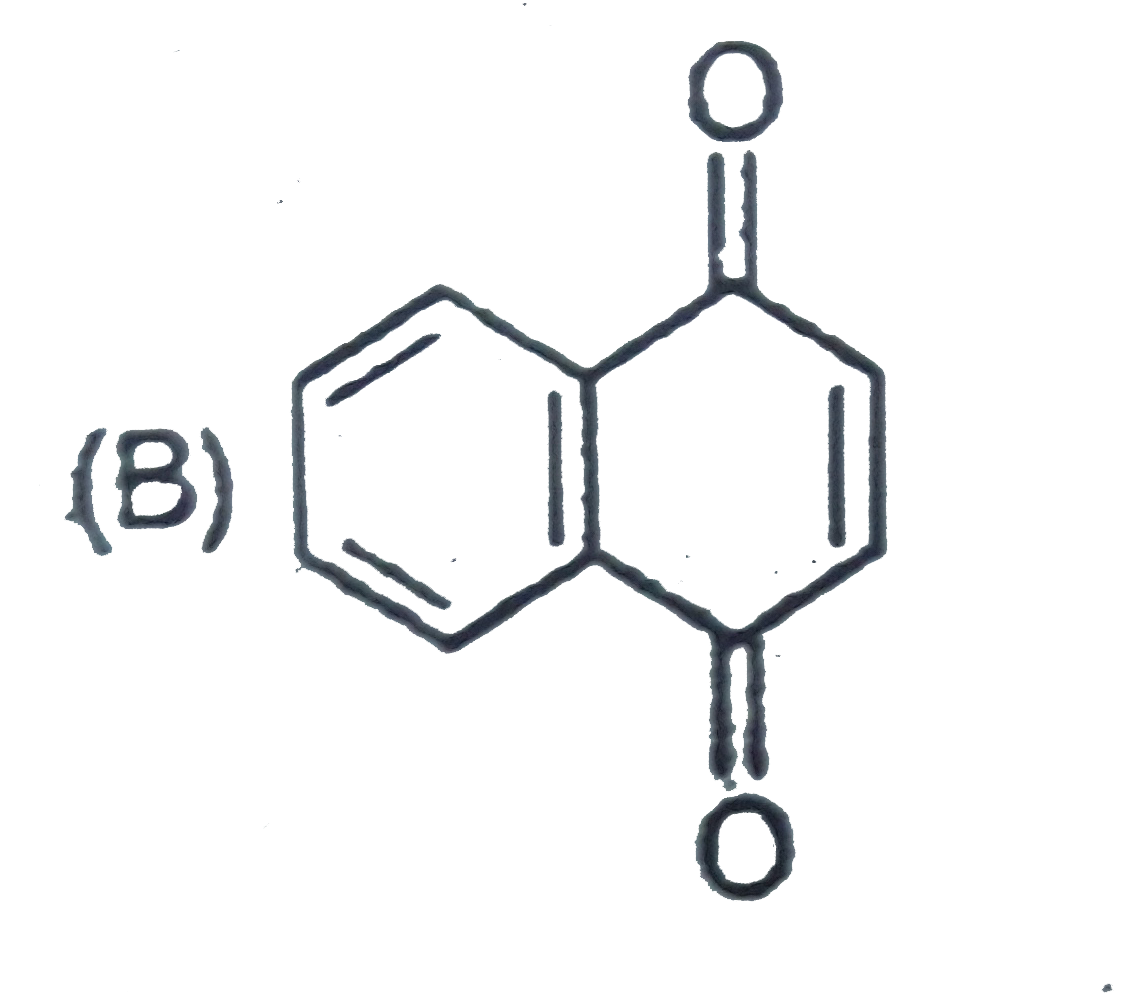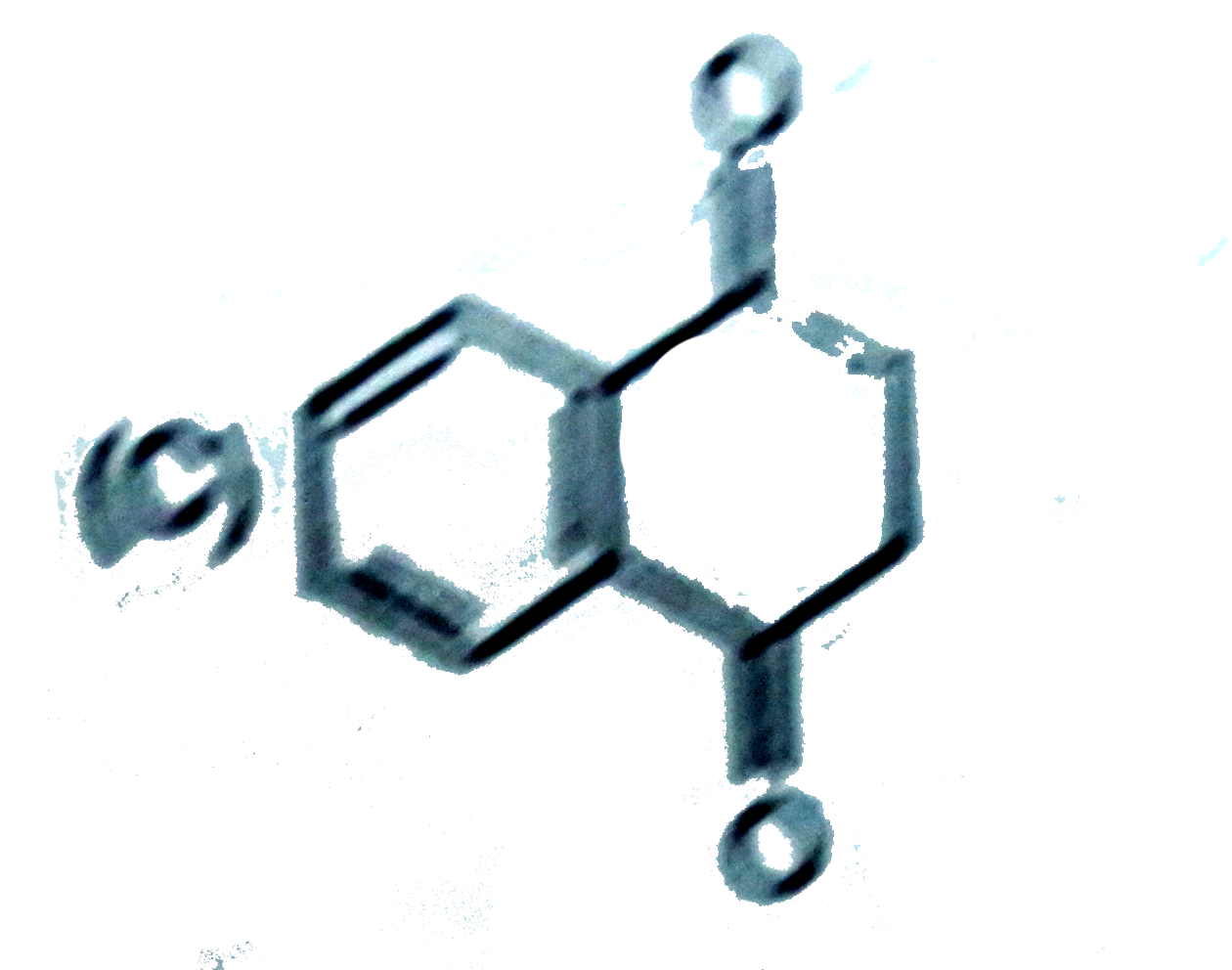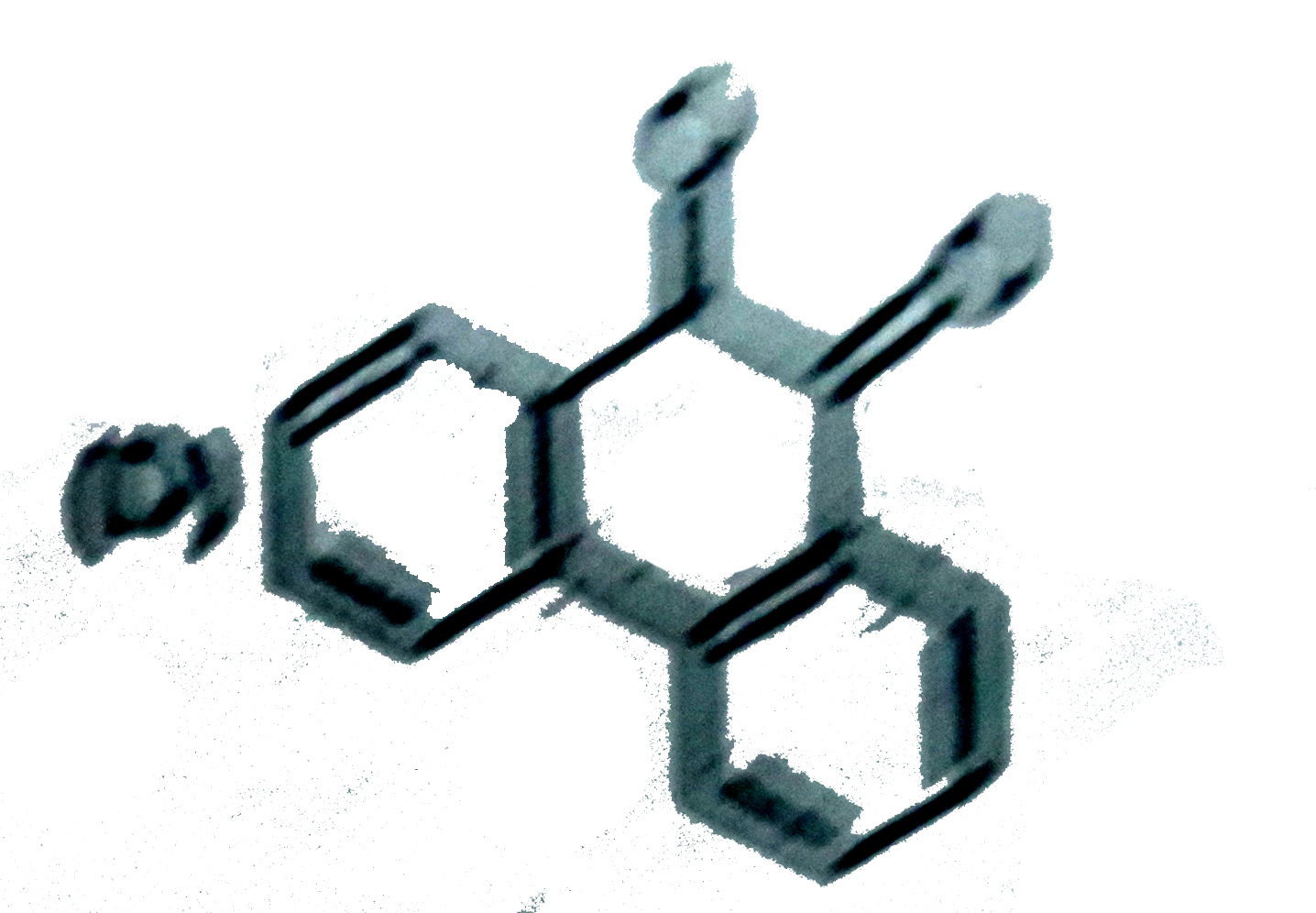Toluene is nitrated and the resulting product is reduced with tin and hydrochloric acid. The product so obtained is diazotised and then heated with cuprous bromide. The reaction mixture so formed contains -
mixture of o– and p-dibromobenzenes
mixture of o- and p-bromoanilines
mixture of o- and m-bromotoluenes
mixture of o- and p-bromotoluenes
The correct Answer is:D
To solve the problem step by step, let's break down the reactions involved when toluene is nitrated, reduced, diazotized, and then treated with cuprous bromide.
Step 1: Nitration of Toluene
- Reaction: Toluene (C6H5CH3) is treated with a nitrating mixture (HNO3 and H2SO4).
- Products: The electrophile generated is the nitronium ion (NO2+). Due to the ortho-para directing effect of the methyl group (CH3), both ortho and para nitrotoluene will be formed.
Hint: Remember that toluene has a methyl group which directs electrophilic substitution to the ortho and para positions.
Step 2: Reduction of Nitro Compounds
- Reaction: The nitrotoluene products (ortho and para) are then reduced using tin (Sn) and hydrochloric acid (HCl).
- Products: This reduction converts the nitro group (NO2) into an amino group (NH2), resulting in ortho and para toluidine (C6H4(NH2)CH3).
Hint: The reduction of nitro groups to amino groups is a common reaction in organic chemistry.
Step 3: Diazotization
- Reaction: The resulting toluidine is diazotized using sodium nitrite (NaNO2) and hydrochloric acid (HCl) at low temperatures (0-5°C).
- Products: This reaction converts the amino group (NH2) into a diazonium salt (C6H4(N2+)CH3).
Hint: Diazotization typically occurs at low temperatures to stabilize the diazonium salt.
Step 4: Reaction with Cuprous Bromide
- Reaction: The diazonium salt is then treated with cuprous bromide (CuBr).
- Products: This reaction replaces the diazonium group with a bromine atom, resulting in bromotoluene (C6H4BrCH3). The reaction can yield both ortho and para bromotoluene depending on the starting material.
Hint: The reaction with cuprous bromide is known as the Gattermann reaction, which introduces bromine into the aromatic ring.
Final Products
The final reaction mixture contains ortho-bromotoluene and para-bromotoluene.
Summary of the Reaction Sequence
1. Nitration: Toluene → Ortho-nitrotoluene + Para-nitrotoluene
2. Reduction: Ortho-nitrotoluene + Para-nitrotoluene → Ortho-toluidine + Para-toluidine
3. Diazotization: Ortho-toluidine + Para-toluidine → Ortho-diazotoluene + Para-diazotoluene
4. Gattermann Reaction: Ortho-diazotoluene + Para-diazotoluene → Ortho-bromotoluene + Para-bromotoluene
Conclusion
The reaction mixture contains ortho-bromotoluene and para-bromotoluene.
---
- Reaction: Toluene (C6H5CH3) is treated with a nitrating mixture (HNO3 and H2SO4).
- Products: The electrophile generated is the nitronium ion (NO2+). Due to the ortho-para directing effect of the methyl group (CH3), both ortho and para nitrotoluene will be formed.
Hint: Remember that toluene has a methyl group which directs electrophilic substitution to the ortho and para positions.
- Reaction: The nitrotoluene products (ortho and para) are then reduced using tin (Sn) and hydrochloric acid (HCl).
- Products: This reduction converts the nitro group (NO2) into an amino group (NH2), resulting in ortho and para toluidine (C6H4(NH2)CH3).
- Reaction: The resulting toluidine is diazotized using sodium nitrite (NaNO2) and hydrochloric acid (HCl) at low temperatures (0-5°C).
- Products: This reaction converts the amino group (NH2) into a diazonium salt (C6H4(N2+)CH3).
- Reaction: The diazonium salt is then treated with cuprous bromide (CuBr).
- Products: This reaction replaces the diazonium group with a bromine atom, resulting in bromotoluene (C6H4BrCH3). The reaction can yield both ortho and para bromotoluene depending on the starting material.
The final reaction mixture contains ortho-bromotoluene and para-bromotoluene.
1. Nitration: Toluene → Ortho-nitrotoluene + Para-nitrotoluene
2. Reduction: Ortho-nitrotoluene + Para-nitrotoluene → Ortho-toluidine + Para-toluidine
3. Diazotization: Ortho-toluidine + Para-toluidine → Ortho-diazotoluene + Para-diazotoluene
4. Gattermann Reaction: Ortho-diazotoluene + Para-diazotoluene → Ortho-bromotoluene + Para-bromotoluene
The reaction mixture contains ortho-bromotoluene and para-bromotoluene.
Topper's Solved these Questions
- AROMATIC COMPOUNDBOOK - MOTIONCHAPTER - AROMATIC COMPOUNDEXERCISE - Exercise - 4 | Level-II
16 Videos
- AROMATIC COMPOUNDBOOK - MOTIONCHAPTER - AROMATIC COMPOUNDEXERCISE - Exercise - 3
17 Videos
- ALKYI HALIDEBOOK - MOTIONCHAPTER - ALKYI HALIDEEXERCISE - Exercise - 4 | Level-II
8 Videos
- ATOMIC STRUCTURE BOOK - MOTIONCHAPTER - ATOMIC STRUCTURE EXERCISE - EXERCISE-4 (LEVEL-II)
18 Videos
Similar Questions
Knowledge Check
Toluene is nitrated and the resulting product is reduct is reduced with tin and hydrochloric acid. The product so obtained is diazotised and then with cuprous bromide. The reaction mixture so formed contains
Amixture of o- and p-bromotoluenesBmixture of o-and p-dibromobenzenesCmixture of o- and p-bromoanilinesDmixture of o- and m-bromotoluenesNitrobenzene when reacted with tin and hydrochloric acid, i.e., in acidic medium, the product formed is:
Aaniline sulphateBbenzeneCphenylhydrazineDnitrobenzene
What product is obtained when (X) is heated with conc. H2SO4A B
B C
C D
D
Aniline is reacted with bromine water and the resulting product is treated with an aqueous solution of sodium nitrite in presence of dilute hydrochloric acid. The compound so formed is converted into. The compound so formed is converted into a tetrafluoroborate which is subsequently heated. The final product is
View SolutionAniline is reacted with bromine water and the resulting product is treated with an aqueous solution of sodium nitrite in presence of hydrochloric acid The compound so formed is converted into a tetrafluoroborate which is subsequently heated The final product is .
View SolutionAcetic acid is treateed with Ca(OH)2 and the product so obtained is subjected to dry distillation. The final products is
View SolutionAcetic acid is treated with Ca(OH)2 and the product so obtained is subjected to dry distillation. The final product is
View SolutionAniline is reacted with bromine water and the resulting product is treated with an aqueous solution of sodium nitrite in presence of hydrochloric acid The compound so formed is converted into a tetrafluoroborate which is subsequently heated The final product is .
View Solution
